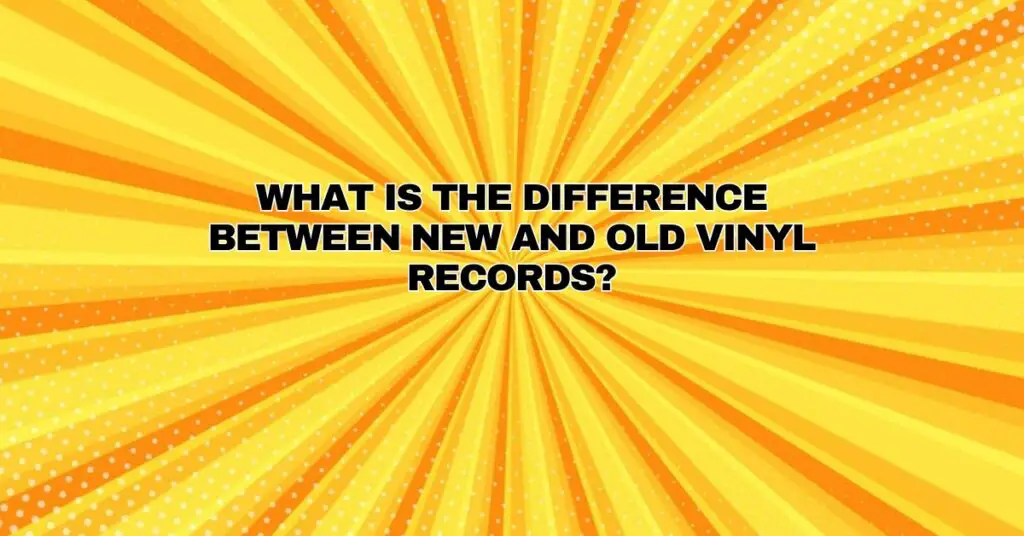The resurgence of vinyl records has brought both new and old vinyl records into the spotlight, creating a fascinating intersection of vintage nostalgia and modern technology. While the vinyl format itself remains consistent, there are distinct differences between new and old vinyl records that collectors, audiophiles, and music enthusiasts should be aware of. In this comprehensive article, we will delve into the contrasting characteristics of new and old vinyl records, from their manufacturing processes to their sound quality and collectibility.
Manufacturing Processes
Old Vinyl Records:
- Analog Recording and Pressing: Many vintage vinyl records were produced during the analog era, from the recording process to the pressing of the records themselves. Analog recordings captured music as continuous waveforms, and analog mastering and pressing techniques were used to create the records.
- Handcrafted: Older vinyl records were often made using more manual and hands-on methods. These records may exhibit subtle imperfections, such as surface noise and occasional pops and clicks, which are characteristic of analog recordings.
New Vinyl Records:
- Digital Recording and Mastering: Contemporary music is often recorded and mastered digitally, using advanced technology and software. Digital recordings are precise and can be manipulated with a high degree of accuracy.
- Modern Manufacturing Techniques: New vinyl records are typically produced using more advanced and automated manufacturing processes. These processes can result in records with lower surface noise and improved overall quality control.
Sound Quality
Old Vinyl Records:
- Analog Warmth: Many collectors and audiophiles appreciate the analog warmth and character of old vinyl records. They often find that the analog format imparts a unique sonic quality, including a warm and slightly “vintage” sound.
- Surface Noise: Vintage records, especially those that have seen extensive use, may exhibit surface noise, pops, and clicks. These imperfections are part of the vinyl experience and can contribute to the record’s charm.
New Vinyl Records:
- Digital Precision: Music recorded digitally and pressed onto new vinyl records can offer a precise and clean sound. Digital technology allows for accurate reproduction of the original recording without the warm analog coloration.
- Less Surface Noise: New vinyl records, when produced with high-quality materials and modern manufacturing techniques, often have lower surface noise and fewer audible imperfections compared to older records.
Collectibility and Rarity
Old Vinyl Records:
- Vintage Appeal: Old vinyl records, particularly those from the mid-20th century, hold significant historical and cultural value. Collectors often seek out original pressings of iconic albums and rare releases.
- Limited Availability: Some vintage records are no longer in production, making them rare and sought after by collectors. Limited availability can drive up the value of these records.
New Vinyl Records:
- Contemporary Releases: New vinyl records encompass a wide range of music genres and artists, including contemporary releases and reissues of classic albums. Collectors may seek out specific pressings or colored vinyl variants for their personal collections.
- Expanding Market: The resurgence of vinyl has led to an increase in the production of new vinyl records, providing enthusiasts with access to a wide selection of music across various genres.
Conclusion
The differences between new and old vinyl records encompass manufacturing processes, sound quality, and collectibility. While old vinyl records offer the charm of analog warmth and historical value, new vinyl records benefit from modern manufacturing techniques, precise digital recordings, and lower surface noise. Both old and new vinyl records have their unique appeal, and the choice between them often comes down to individual preferences, musical tastes, and the desire to explore the rich tapestry of the vinyl format in all its analog and digital glory.


